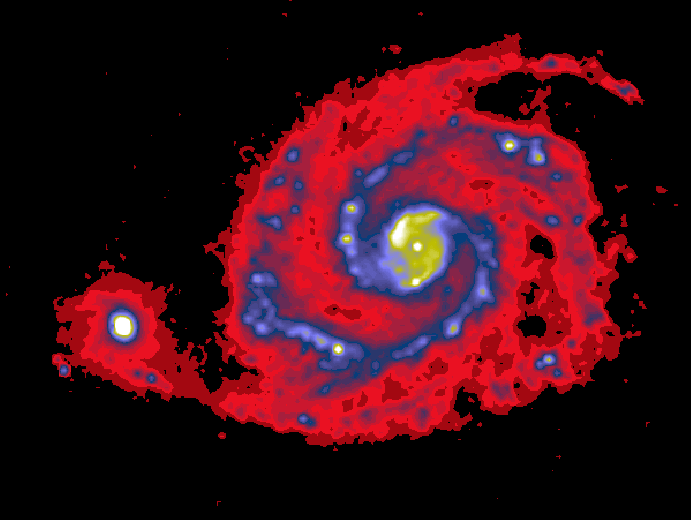The ISOCAM instrument on board the Infrared Space Observatory ISO
was designed to map selected areas of the
sky in the spectral region from 2.5 to 18![]() m at various spatial
and spectral resolutions.
m at various spatial
and spectral resolutions.
With ISOCAM, spectral features at wavelengths inaccessible from the ground
were studied.
The morphology of objects at a scale of a few arcseconds was
investigated through broad and narrow band filters. Spectral imaging was
also possible with Circular Variable Filters (CVF)
at a spectral resolution of up to
![]() .
.

|
The spatial resolution was determined by the diffraction limit at longer
wavelengths, and was limited mainly by undersampling of the PSF at shorter
wavelengths. For a 60 cm diameter telescope the diameter in
arcseconds of the Airy disc (FWHM)
is given by
![]() , or
, or
![]() for the first
dark ring. Regarding the optical performance of ISO, images of point
sources were made, clearly showing up to the fifth Airy
diffraction ring. A detailed description of the telescope and the
pointing system is given in the ISO Handbook Volume I,
[40].
for the first
dark ring. Regarding the optical performance of ISO, images of point
sources were made, clearly showing up to the fifth Airy
diffraction ring. A detailed description of the telescope and the
pointing system is given in the ISO Handbook Volume I,
[40].
ISOCAM provided imaging capabilities across a field of view of up to
3![]() diameter. It consisted of two optical channels,
used one at a time,
each of which containing a
diameter. It consisted of two optical channels,
used one at a time,
each of which containing a ![]() pixels infrared detector
array. The short wavelength channel (SW) operated between 2.5 and
5.2
pixels infrared detector
array. The short wavelength channel (SW) operated between 2.5 and
5.2![]() m; the long wavelength channel (LW) between 4 and 18
m; the long wavelength channel (LW) between 4 and 18![]() m. Each
channel included lenses covering a range of magnifications (yielding fields
of view having 1.5, 3, 6 and 12
m. Each
channel included lenses covering a range of magnifications (yielding fields
of view having 1.5, 3, 6 and 12
![]() per pixel), fixed
filters and CVFs.
During the ISO pre-flight thermal vacuum tests it was discovered that
the apparent output voltage of one of the LW detector columns
(`column 24') was always at zero Volts. In space it was found that,
because of the repositioning jitter in the camera wheels, the edges
of the array (essentially the outermost columns), did not always receive
sufficient light when using the 6
per pixel), fixed
filters and CVFs.
During the ISO pre-flight thermal vacuum tests it was discovered that
the apparent output voltage of one of the LW detector columns
(`column 24') was always at zero Volts. In space it was found that,
because of the repositioning jitter in the camera wheels, the edges
of the array (essentially the outermost columns), did not always receive
sufficient light when using the 6
![]() per pixel lens.
per pixel lens.